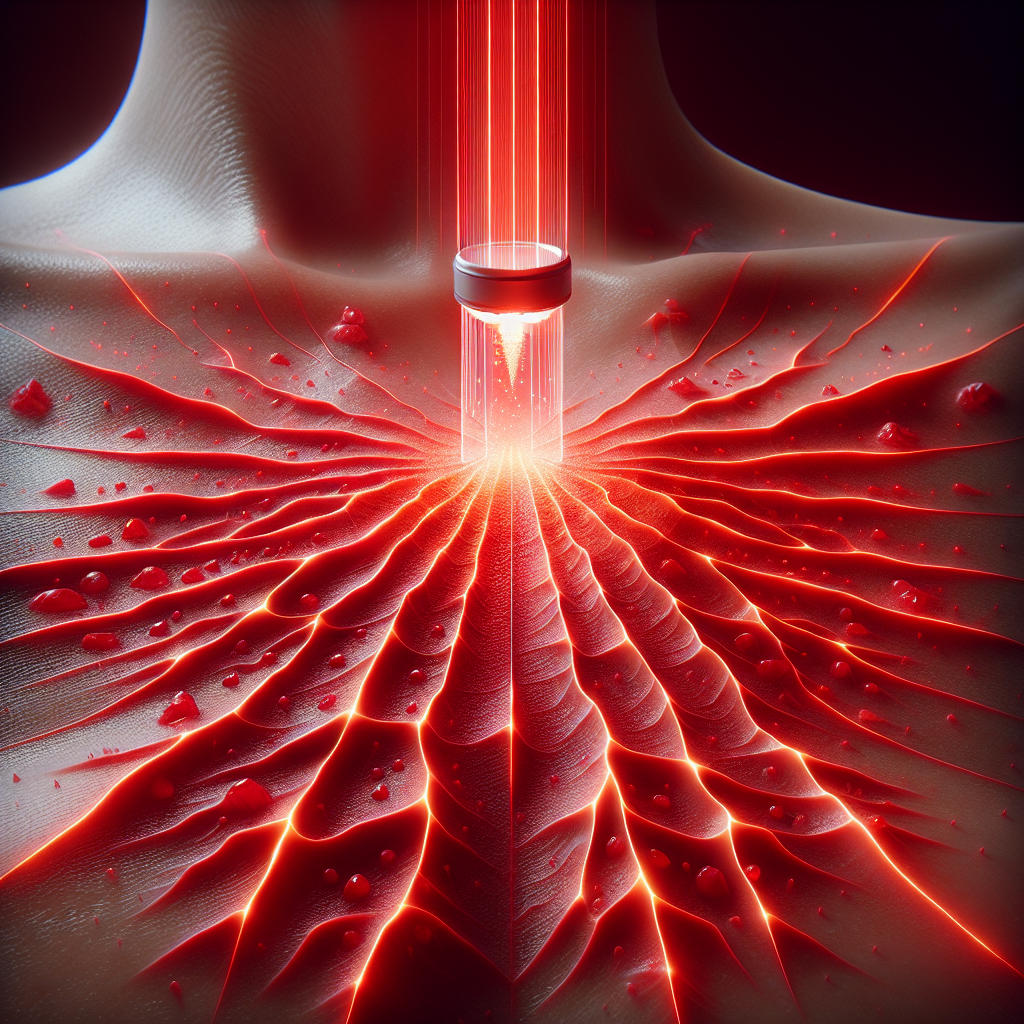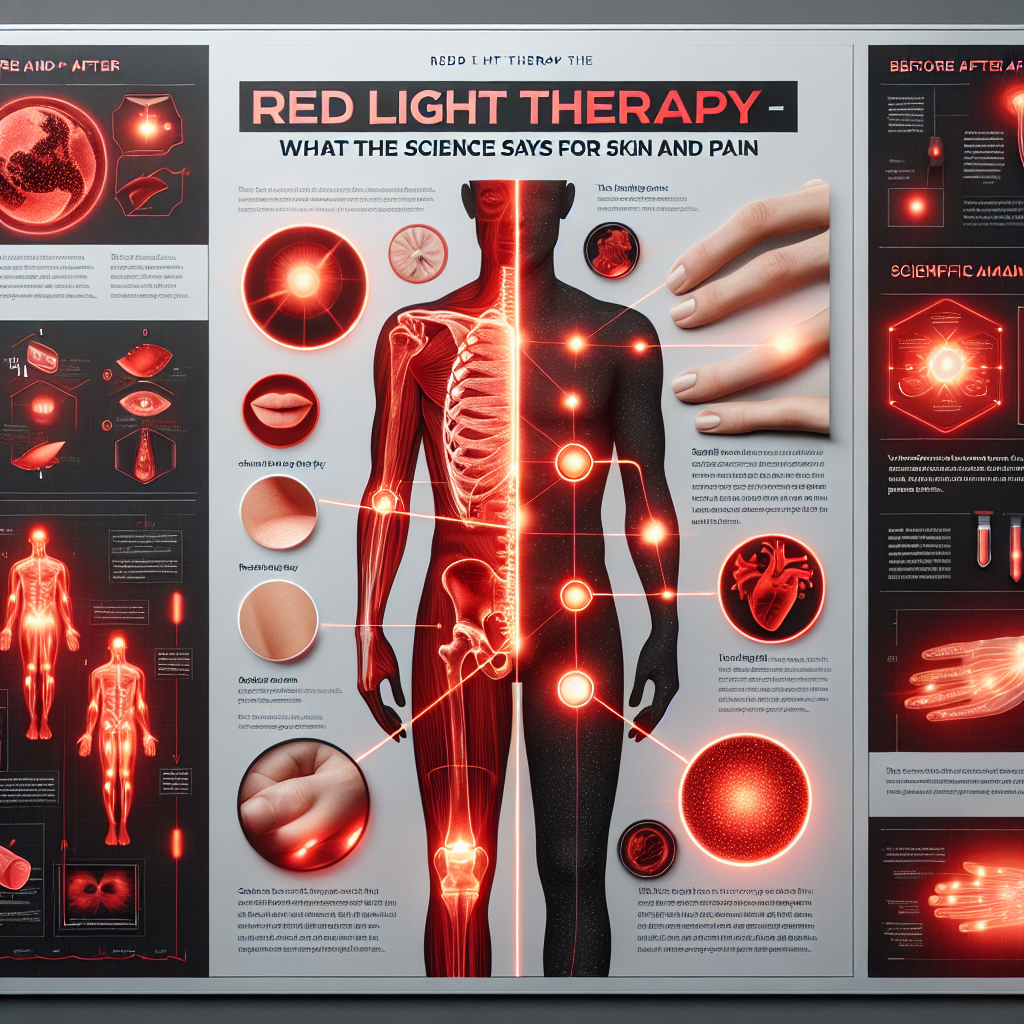Red Light Therapy: What the Science Says About Skin and Pain

Discover what science has to say about Red Light Therapy’s impact on skin and pain. Uncover the benefits, understand the process, and decide if it’s the right choice for you. Learn more at Vibrant Vitality. Take the first step towards a healthier you today!
Exploring the Scientific Evidence: Red Light Therapy for Skin Rejuvenation
Red light therapy, also known as photobiomodulation, is a non-invasive treatment that uses low-level light to treat various conditions, including skin issues and pain. This therapy has been gaining popularity in recent years due to its potential benefits and lack of side effects. However, it’s essential to understand what the science says about red light therapy, particularly its effectiveness in skin rejuvenation and pain management.
Red light therapy works by delivering wavelengths of red and near-infrared light to the skin and cells. This light is absorbed by the mitochondria, the powerhouse of the cell, which then stimulates energy production and cellular regeneration. This process is believed to result in numerous health benefits, including improved skin health and reduced pain.
When it comes to skin rejuvenation, several scientific studies have shown promising results. A study published in the Journal of Photochemistry and Photobiology found that red light therapy could improve skin complexion and increase collagen density. Collagen is a protein that gives the skin its elasticity and strength. As we age, collagen production decreases, leading to wrinkles and sagging skin. By stimulating collagen production, red light therapy may help to reduce these signs of aging.
Another study published in the Journal of Cosmetic and Laser Therapy found that red light therapy could improve the appearance of facial skin in individuals with signs of photoaging, such as wrinkles and age spots. The participants in the study experienced significant improvements in skin complexion, texture, and overall satisfaction with their appearance after undergoing red light therapy.
In addition to skin rejuvenation, red light therapy has also been studied for its potential to alleviate pain. A systematic review published in the Journal of Pain Research found that red light therapy could effectively reduce pain in individuals with different conditions, including musculoskeletal disorders, neuropathic pain, and postoperative pain. The review concluded that red light therapy could be a promising treatment for pain management, particularly for patients who do not respond to conventional treatments.
The mechanism behind red light therapy’s potential pain-relieving effects is believed to be related to its ability to reduce inflammation and promote healing. When the body is injured, it responds by increasing blood flow and inflammation to the affected area. While this is a normal part of the healing process, excessive inflammation can lead to pain and tissue damage. By reducing inflammation and promoting cellular regeneration, red light therapy may help to alleviate pain and speed up the healing process.
Despite the promising evidence, it’s important to note that more research is needed to fully understand the potential benefits and limitations of red light therapy. While the current studies suggest that red light therapy could be an effective treatment for skin rejuvenation and pain management, these findings need to be confirmed in larger, well-designed trials.
In conclusion, red light therapy is a promising treatment that has been shown to improve skin health and reduce pain in several scientific studies. However, as with any treatment, it’s important to consult with a healthcare professional before starting red light therapy to ensure it’s the right option for you.
Understanding the Role of Red Light Therapy in Pain Management: A Scientific Perspective

Red light therapy, also known as photobiomodulation, is a non-invasive treatment that uses low-level red light to stimulate cellular function. This therapy has been gaining attention in the scientific community for its potential benefits in managing pain and improving skin health.
The science behind red light therapy is fascinating. It involves the use of wavelengths of light, specifically those within the red and near-infrared spectrum, to penetrate the skin and stimulate cellular activity. The light is absorbed by mitochondria, the powerhouse of cells, which then boosts energy production and promotes healing. This process is believed to reduce inflammation and pain, and stimulate collagen production, which is beneficial for skin health.
Several scientific studies have explored the potential benefits of red light therapy in pain management. A 2016 review published in the journal “Pain Research and Management” analyzed 22 randomized controlled trials and found that red light therapy significantly reduced pain in patients with musculoskeletal disorders. Another study published in “Lasers in Medical Science” in 2018 found that red light therapy was effective in reducing pain and improving function in patients with knee osteoarthritis.
The science also supports the use of red light therapy for skin health. A 2014 study published in “Photomedicine and Laser Surgery” found that red light therapy improved skin complexion and increased collagen density. Another study published in “The Journal of Clinical and Aesthetic Dermatology” in 2019 found that red light therapy improved skin elasticity and reduced wrinkles in aging skin.
Despite these promising findings, it’s important to note that the science of red light therapy is still evolving. While the therapy has been shown to be safe with minimal side effects, more research is needed to fully understand its long-term effects and optimal treatment protocols.
Moreover, the effectiveness of red light therapy can vary depending on several factors, including the wavelength of light used, the duration and frequency of treatment, and the individual’s specific condition. Therefore, it’s crucial to consult with a healthcare provider before starting red light therapy.
In conclusion, the science suggests that red light therapy has potential benefits in managing pain and improving skin health. However, as with any treatment, it’s important to approach it with a critical eye and seek professional advice. As research continues to evolve, we can look forward to gaining a deeper understanding of the role of red light therapy in health and wellness.
Red light therapy represents a promising frontier in the field of pain management and skin health. Its non-invasive nature and minimal side effects make it an attractive option for those seeking alternative treatments. As we continue to explore the potential of this innovative therapy, we can hope to unlock new possibilities for improving quality of life and promoting overall well-being.
Decoding the Science: How Red Light Therapy Impacts Skin Health and Pain Relief
Red light therapy, also known as photobiomodulation, is a non-invasive treatment that uses low-level red light wavelengths to penetrate the skin and stimulate cellular activity. This innovative therapy has been gaining traction in the medical and aesthetic fields due to its potential benefits for skin health and pain relief. But what does the science say about red light therapy? Let’s decode the research to understand how this treatment impacts skin health and pain relief.
The science behind red light therapy is rooted in the understanding of how light interacts with our bodies. When red light penetrates the skin, it is absorbed by the mitochondria, the powerhouse of our cells. This absorption stimulates the production of adenosine triphosphate (ATP), the energy currency of our cells. The increase in ATP production enhances cellular function and promotes healing and regeneration.
In terms of skin health, red light therapy has been shown to have a positive impact on a variety of skin conditions and aesthetic concerns. A study published in the Journal of Photochemistry and Photobiology found that red light therapy can stimulate collagen production, which is essential for maintaining skin elasticity and reducing the appearance of wrinkles. Furthermore, red light therapy has been found to reduce inflammation and increase microcirculation, which can help to improve the appearance of acne, rosacea, and other inflammatory skin conditions.
In addition to its skin benefits, red light therapy has also been studied for its potential to alleviate pain. The Journal of Pain Research published a study that found red light therapy to be effective in reducing pain for individuals with musculoskeletal disorders. The therapy works by reducing inflammation and promoting tissue repair, which can help to alleviate pain and discomfort. Moreover, red light therapy has been found to stimulate the release of endorphins, the body’s natural painkillers, providing further pain relief.
While the science behind red light therapy is promising, it’s important to note that results can vary from person to person. Factors such as the severity of the skin condition or pain, the specific wavelength of the red light used, and the duration and frequency of treatment can all impact the effectiveness of the therapy. Therefore, it’s recommended to consult with a healthcare professional before starting red light therapy to ensure it’s the right treatment for your specific needs.
In conclusion, the science supports the use of red light therapy for improving skin health and alleviating pain. By stimulating cellular activity, promoting healing, and reducing inflammation, red light therapy offers a non-invasive and natural approach to enhancing skin health and managing pain. As research continues to evolve, we can expect to see more applications of this innovative therapy in the fields of medicine and aesthetics.